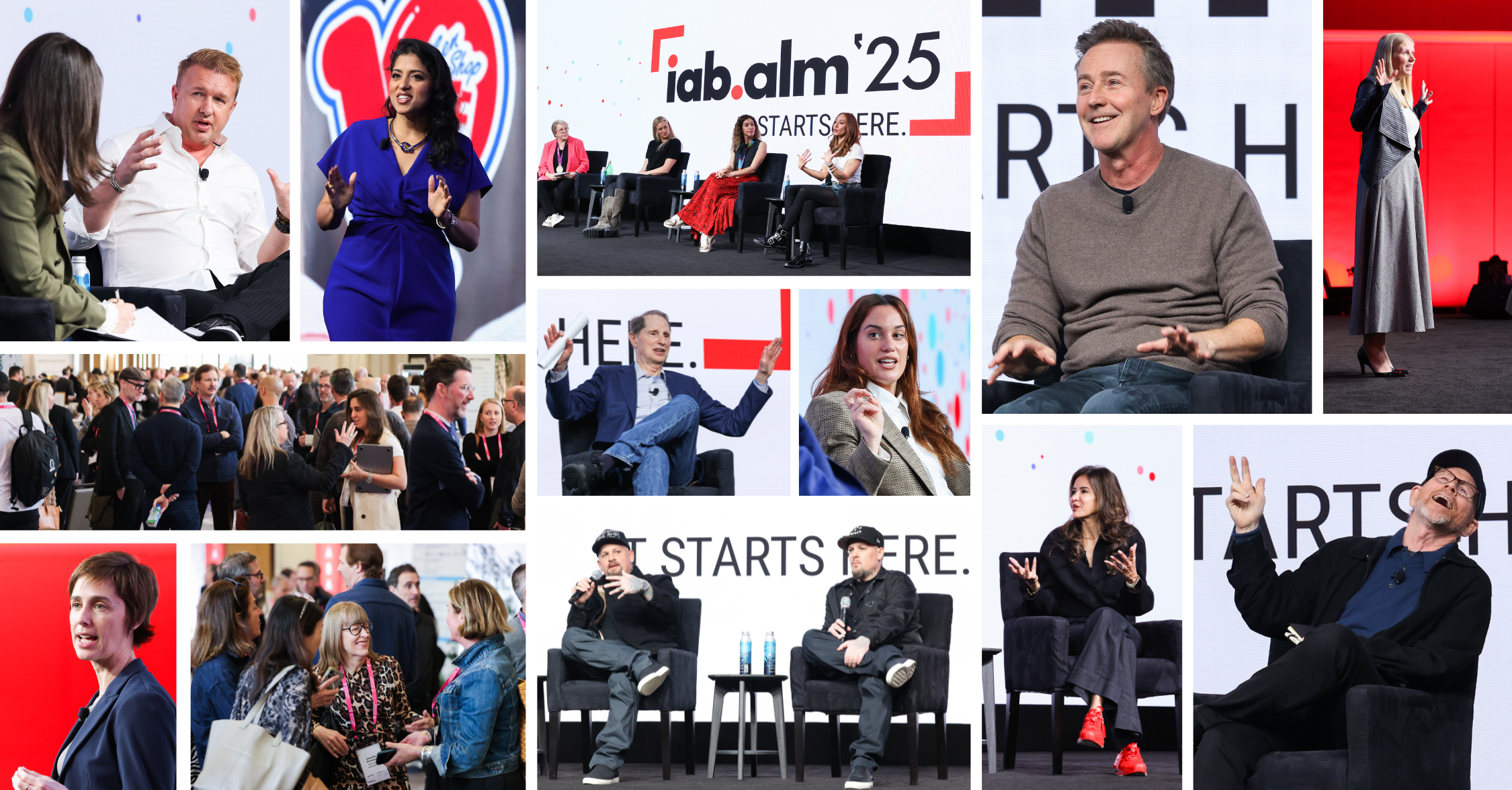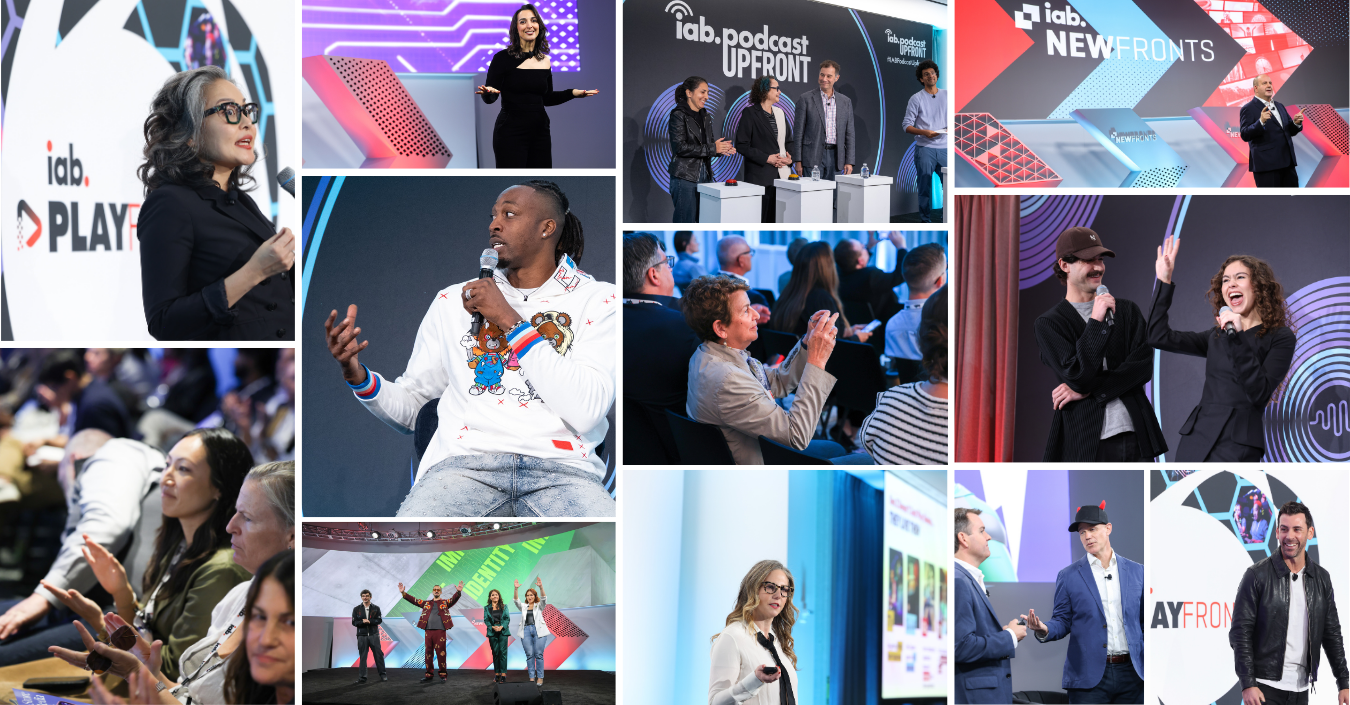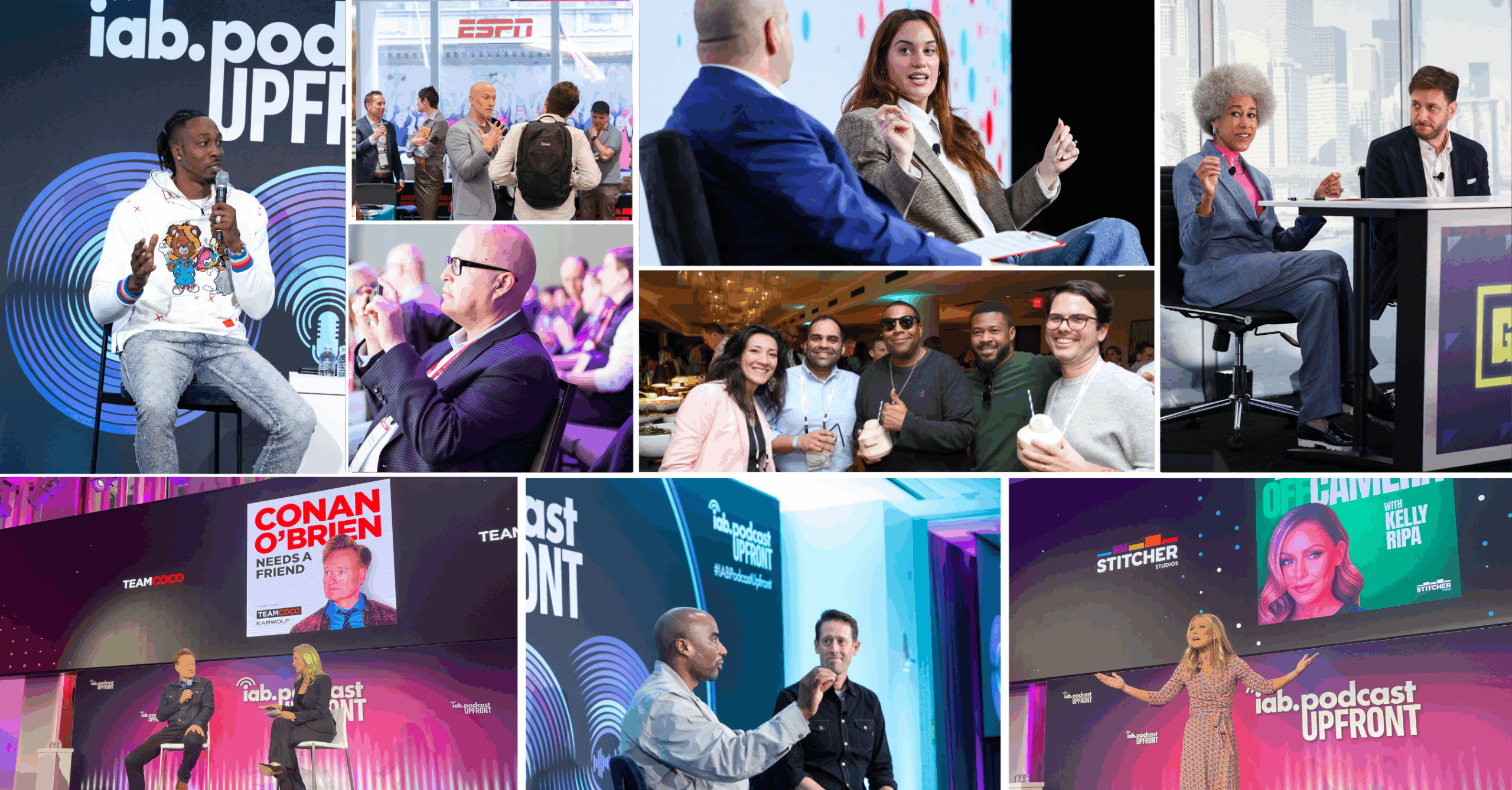In an effort to support growth, the IAB Audio Innovators Leadership Summit convened on October 16th with a focus on identifying the best ways to optimize advertiser investment in a medium that plays a central and increasingly important role in the lives of American consumers.
At its core, this event was dedicated to the proposition that a well-known imbalance between media spend in audio and the amount of time and attention that consumers give to audio content can and should be addressed for the mutual benefit of listeners, advertisers, and the audio creators and publishers whose content enriches the lives of more than 200 million Americans each week.
This blog post will cover some of the key takeaways from the day and share some ways for you to participate in upcoming initiatives that will be designed to bring these takeaways to life.
Earning Attention
For those who know and love audio’s incredible diversity of content and personalities, it is axiomatic to say that trust in audio creators and the meaningfulness of audio content in the lives of consumers causes them to respond more favorably to the advertising messages they encounter in audio than they do in other forms of media.
To borrow the amusing words of AILS’ keynote speaker, Sounds Profitable’s Tom Webster, this “special snowflakeness” of audio content is often referenced as a powerful reason for brands to invest in audio, but one of the most important takeaways from the summit was the preponderance of data to back up this inherent promise of aligning marketing messages with the special qualities of audio.
A couple of key data points that Tom cited, for instance, demonstrated the strengths of podcasting, which Sounds Profitable research shows has an outsized impact on the responsiveness of consumers for all the key metrics of advertiser success. Whether the KPI was awareness, consideration, information seeking, recommendation, or purchase activity, research that Tom shared showed that podcasts scored higher across the board for largescale omnichannel advertisers including State Farm, Amazon, Walmart, and GEICO in comparison to both legacy media TV and Radio environments and the digital media environments of CTV and YouTube.
Similarly, other data discussed at the summit from across the audio research landscape shows that audio is more likely than other forms of media to cause consumers to say that they are more willing the consider the products and services they learn about because of factors such as the high value they place on the audio content they consume and a direct linkage in the minds of listeners between the ads they hear and the ability of their favorite creators to continue making the content that they love.
As Tom said, the job of audio publishers, like publishers in any other medium, is not to sell ads but rather to earn attention from listeners who have an endless array of media from which to choose. Identifying the unique opportunities to harness the active support of listeners who pay attention to and favor the advertisers who support their favorite content – and to identify the best ways to measure the impact of that support – was a foundational goal of the summit.
Best In Class Influencers + Innovations in Measurement & Modeling Are the Keys To Success
Flowing directly out of this foundational goal, one of the biggest takeaways was the importance of tapping into the influence of audio creators in podcasting and radio, whose deep and enduring bonds with their listeners create powerful opportunities for brands to align with customers who are not only predisposed to appreciate sponsors of their favorite shows but also actively listening to both content and ads.
This highly attentive profile of radio and podcast listeners was considered from many different angles, with a special emphasis placed on the quality of the relationship between audio creators and their listeners, which often develop and mature over the course of many years. At every turn throughout the day at the summit, the alignment of brand stories with these high-quality creator-listener relationships was shown in one example after another to produce successful marketing outcome for brands who have invested in audio, some of which are highlighted in an IAB Podcasting in the Creator Economy Guide to which many summit attendees contributed leading up to the summit.
Despite all of these individual examples, however, there is a longstanding hesitancy on the part of some brands to fully embrace audio as a constant presence on their media plans because of concerns over the ability to measure the impact of audio advertising in a consistent and standardized manner surfaced.
For this reason, another key takeaway was the importance of taking a two-track approach when it comes to measurement, attribution, and accounting for audio’s contributions to marketing outcomes in the context of omnichannel campaigns.
Audio Measurement Education Is Still of Paramount Importance
The first measurement track identified by summit attendees is leveling up existing efforts on the part of buyers and sellers of audio ad inventory to educate one another about some of the powerful measurement capabilities that already exist in the space.
In an IAB Digital Audio Measurement Guide to which many summit attendees contributed in 2022, for instance, the ability to perform everything from pixel-based attribution to foot traffic and brand lift studies was documented so that publishers and advertisers could have a shared reference point for measuring success with audio, and in the two years since, the measurement capabilities have become stronger still.
The ongoing imperative for publishers to share what they can do and for advertisers to share outcomes data with audio measurement providers to support their needs was a universal ask at the summit, and it is something to which everyone in attendance agreed to commit in 2025.
Structuring and Standardizing Measurement Data for Ease of Use and Media Mix Modeling Is of Equal Importance
As noted above, example after example documenting individual success stories for audio ad campaigns abound, but, as also mentioned, many current and prospective buyers of audio advertising would like to see more standardization of measurement and easier access to data that can be used to integrate audio in media mix models.
This desire for greater uniformity and data modeling is shared by many in the audio publishing and ad tech communities, who have made great progress in partnership with their buyside partners on advancements in audio that make it easier to measure its impacts alongside other channels.
Among some of the examples cited, a groundbreaking partnership between Horizon Media and the omnichannel measurement powerhouse Claritas has enabled an apples-to-apples comparison and modeling of audio alongside other channels that has led to a shift in media dollars into audio for Horizon clients and points to a future state of integrated audio measurement in which the gap between current levels of investment and the amount of time and attention listeners give to audio is closed.
With this kind of measurement innovation in mind, most attendees agreed that further standardization, especially in the structure and delivery of data that can be used for modeling, is a key to growth and that an effort to drive standardization is another area to prioritize moving forward.
Programmatic, Brand Safety, and Creative Best Practices Will Open Up Inventory and Drive Success Up and Down the Marketing Funnel
Among the topics most intensely discussed at the summit, increased usage of programmatic buying, greater understanding and use of brand safety and suitability scoring, and a commitment to producing audio ad creative that is tailored to the medium and takes full advantage of audio’s emotional resonance were areas of particular focus.
On the programmatic front, key takeaways included the fact that audio is integrated with every major DSP across various transaction types, including Programmatic Guaranteed deals and private auctions, enabling audio’s integration into broader programmatic strategies alongside other tactics like online video and display. This ability to further tap into the intimacy of audio’s highly personalized content experience by addressing hyper engaged audiences at scale across entire audio networks is an underappreciated and underutilized tactic that attendees identified as a particular engine of future growth.
Along the same lines, the advent of audio specific, AI enabled transcription analysis tools to enable brand safety and suitability that buyers are used to in other forms of digital media was another key takeaway, with a particular focus on the vital importance of challenging assumptions about the suitability of certain types of content with data infused scoring of content. Leaning into automated analysis of test campaigns to unlock value for brands that miss out on profitable opportunities to align with contextually relevant content that entrenched policies of overly broad keyword block lists exclude was an especially important recommendation to come out of the day.
And tying it all together from a test and learn standpoint, two more key recommendations came in the form of pushing for the inclusion of audio during the process of producing creative briefs and being sure to focus on producing contextually relevant iterations of pre-produced audio creative alongside host read ads. In both cases, every company type in the room, from brands and agencies to publishers and technology companies, agreed that a vitally important ingredient when it comes to solving complex marking challenges for advertisers is leaning into the special, storytelling capabilities of audio, and it was the agreement of all in attendance that working audio into creative briefs and balancing host read ads with producer read creative would be 2025 action items for all concerned.
All Aboard the Audio Train
As alluded to above, an overriding goal of the summit was to identify areas for growth in which IAB can take an active role in supporting the businesses of everyone working in audio today.
And, as noted immediately above, some of the best ways to do that involve support for innovations in audio measurement to support audio’s inclusion in MMM, programmatic activation across the mid and the long tail of audio to supplement and leverage the power of direct sold sponsorships, and centering the development of audio creative in the media planning process.
To help in all these areas, IAB will continue partnering with the industry by doing what we can to facilitate collaboration and to reflect and share the collective wisdom and best practices of the community.
One such initiative is the upcoming release of a Getting Audio and Podcasting on the Media Plan guide that reflects the wisdom of many audio stakeholders regarding the all-important topic of audio’s ability to not only drive advertising performance in its own right but also to supercharge the performance of media investments in other channels. This guide will be released next Wednesday, October 30th, with a companion webinar to discuss its key takeaways taking place from 2pm to 2:45pm ET that afternoon.
To stay abreast of and participate in activities like this and to get involved with all of IAB’s efforts to support growth in audio, we hope you will consider joining IAB’s Audio Committee where initiatives such as the creation of the Podcasting in the Creator Economy and Getting Audio and Podcasting on the Media Plan guides were developed and where you will be able to join new and existing IAB and Tech Lab working groups to support further innovation in audio measurement, the development of podcast programmatic guidelines, and much more.
As everyone who attended the IAB Audio Innovators Leadership Summit can attest, the power of audio to deliver superior marketing returns alongside the amazing content offerings that listeners flock to is a vitally important part of digital advertising’s future, and we hope you’ll hop on the audio train and come along for the ride to that increasingly profitable destination.




